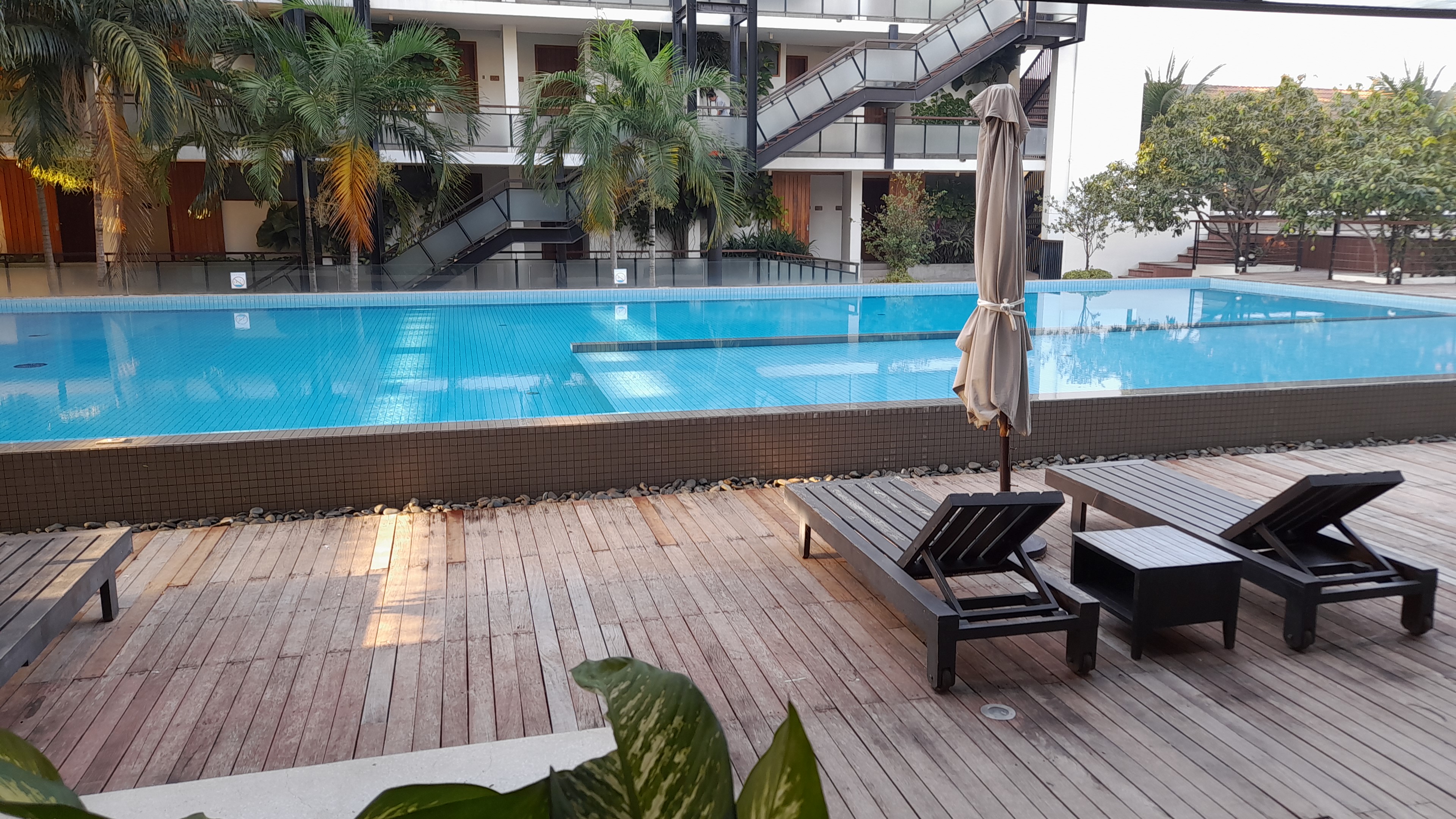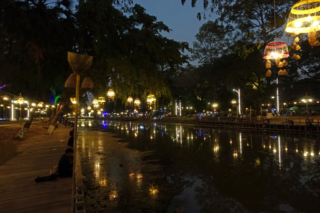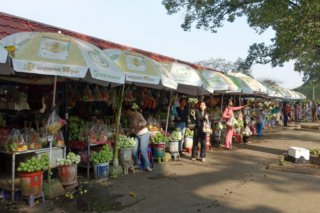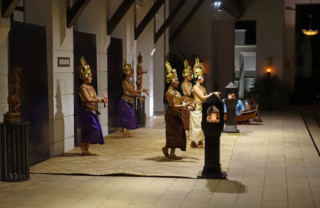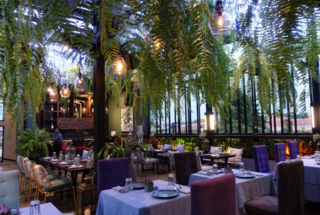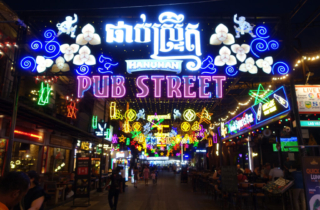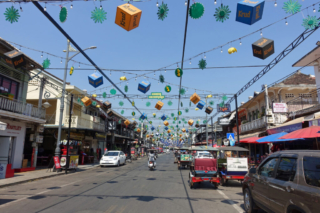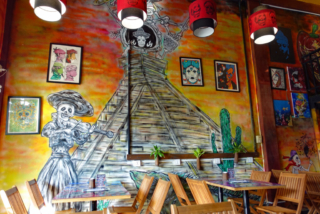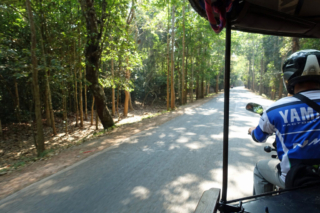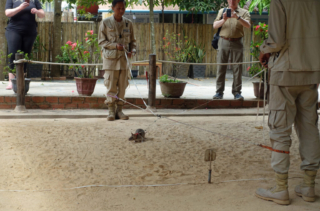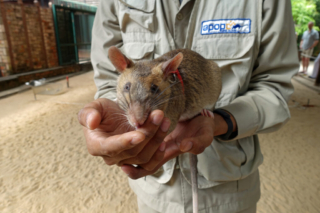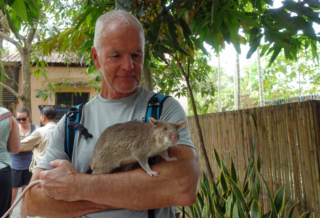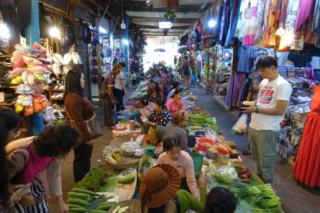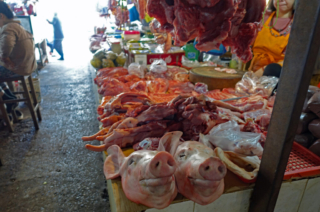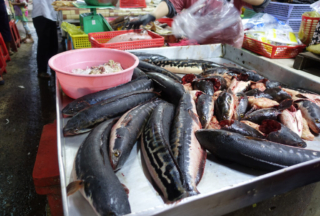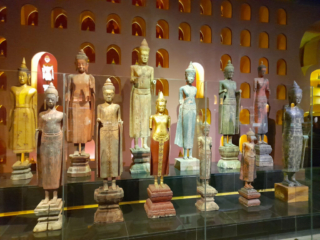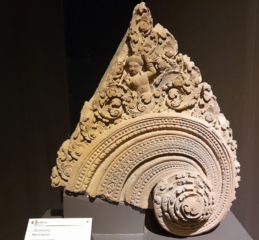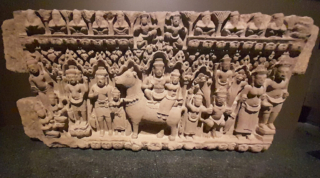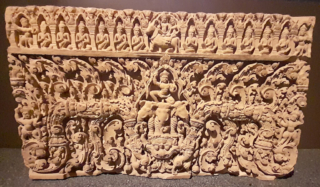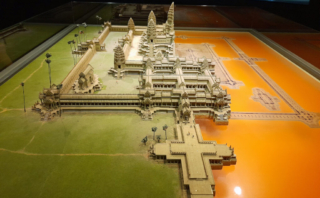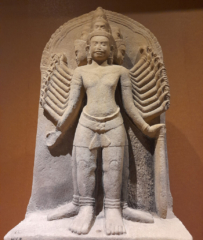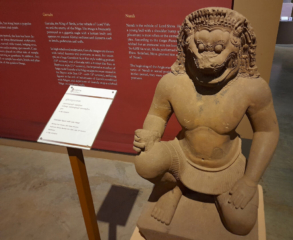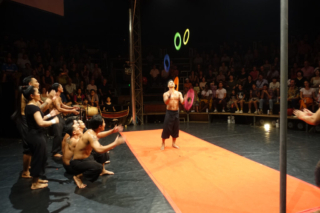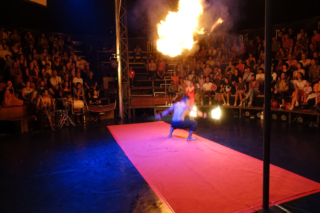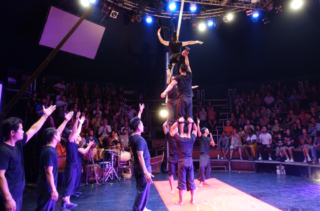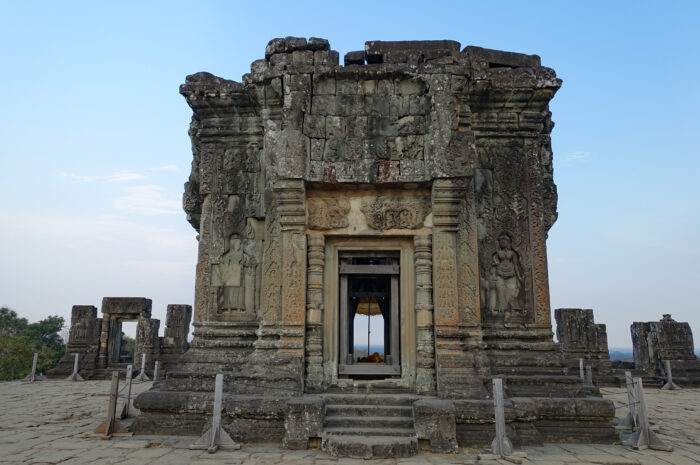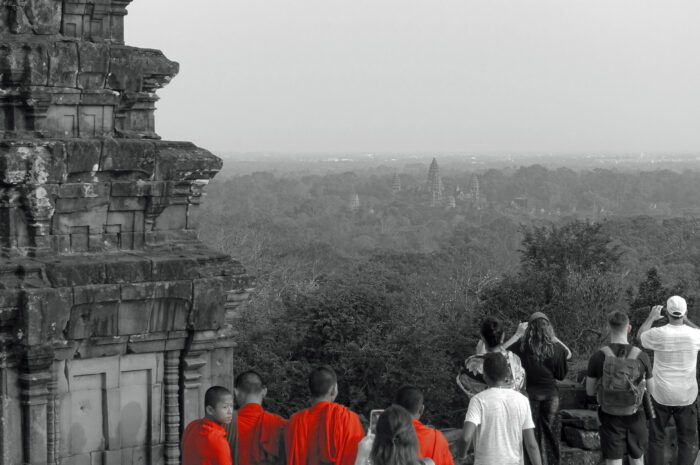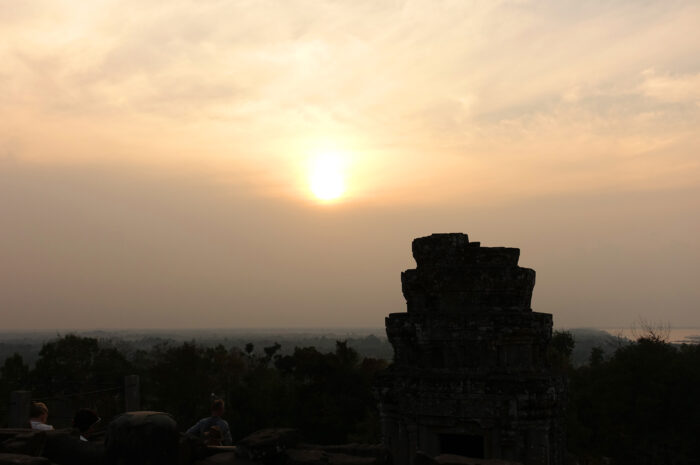
The ancient Khmer Empire, centered in what is now northern Cambodia, lasted from 802 to 1431 and is known historically as the Angkor period. During this time the majestic monuments of Angkor Wat and Bayon were constructed, along with hundreds of smaller temples, testifying to the immense wealth and power of the empire. It is these monuments that draw millions of tourists a year.
Modern day Cambodia was a protectorate of France from 1867 to 1953 leaving behind a legacy of French influence and beautiful French-Colonial architecture. In 1907 when the French gained control over the provinces of Siem Reap and Battambang, the town of Siem Reap was little more than a village. The town began to grow as luxury hotels were opened and Angkor became one of Asia’s leading draws until the late 1960’s when civil war kept the tourists away. The Cambodian civil war lasted 8 years at which point the Khmer Rouge took control, inflicting unimaginable horrors on the Cambodian people. The Khmer Rouge systematically tortured and killed anyone they saw as a threat to their vision for Cambodia. During the 3 years and 8 months of Khmer Rouge control roughly ¼ of the population was exterminated, Buddhism was outlawed and 95% of the Buddhist temples were destroyed. The people were reduced to nothing, stripped of their dignity and forced to migrate to the countryside to work on farms. The atrocities committed by the Khmer Rouge are impossible to understand!!! Sadly, even today authoritarian political oppression continues with Cambodia ruled by one political party and consistently listed as one of the most corrupt governments in the world. I don’t believe it’s an easy place to live and work, but for tourists, it’s an incredible place to visit and see the remains of the ancient Khmer civilization.
Prior to arriving in Cambodia, we did not get our visa online because it just seemed too complicated and necessitated printing documents, so we decided to get our visa on arrival and expected a slow process. The Siem Reap airport was quiet when we arrived, and we were second in line at the ‘pay for visa’ queue. The immigration officer took our passports then ‘offered’ us fast track processing, without telling us what it would cost nor giving us the chance to decline his offer. So off he ran with our passports, shortly motioning us to move over to window #9 where we were waved in front of the five other people standing there, to collect our passports complete with visas inside. Then it came time to pay, and the immigration officer would only say ‘pay me what you feel like’ Well, we were a bit flustered and decided that USD $20 was what his service was worth, although he asked for another USD $10 which we refused. Then he pointed to the customs officer where we had to turn in our declaration form and from there we exited the airport…..without our luggage!!!!!! OMG we were rushed through so fast by our over-zealous immigration officer we quit paying attention. So, there we are standing outside the airport with no luggage feeling like idiots. It took 20 minutes for an airport official to come outside, escort us back inside through a side door, scan our passports and escort us back to the luggage carousel where we retrieved our bags. At this point we were laughing at our mistake, and he assured us that we were not the first ones to do this, but we felt like complete novice travelers 😂😂 Blair blames his inattention on the fact he was taking some pretty strong painkillers re his wisdom teeth surgery 2 days earlier, but I should have been paying more attention! Our Cambodian visas are valid for 30 days and cost USD $30 each, plus the above-mentioned USD $20 tip.
After our somewhat auspicious arrival, we spent three weeks in Siem Reap, Cambodia the second largest city in the country after the capital city of Phnom Penh. The municipality of Siem Reap has a population of around 200,000 residents, a size we found pleasant and not overwhelmingly busy. The city is large enough to have many hotels, restaurants and services, but small enough not to have the crazy traffic of other Asian cities. (click on any picture for a larger view)
The major attraction of Siem Reap is the Angkor Wat temple complex, Cambodia’s most popular tourist attraction with 2.6 million visitors in 2018. Visitor numbers have yet to recover from the covid pandemic, but numbers are on the rise again. In addition to Angkor Wat there are hundreds of other temples in the surrounding area, so many that I wrote about the ones we visited in earlier blog posts. Besides our temple tours, we found a few other interesting places in Siem Reap:
Cambodia is one of the most land-mine affected countries in the world, but for the past 25 years Apopo has been working to clear the country of unexploded ordnance and land mines. Our tour of the Apopo Visitor Center was an uplifting experience where we learned about the Hero-Rats trained to detect land mines and unexploded bombs. These large African Pouch rats are trained in Tanzania to detect TNT, imported to Cambodia and are being used to clear the land so it can be returned safely to the farmers and residents. Each rat costs approx USD $6,000 and with over 214 tons of bombs dropped and 6 million land mines placed during the late 60’s and early 70’s it will take years to fully reclaim them all. Apopo is also busy operating in nearby Vietnam and Laos who have the same problem with active land mines littering the country. It was a powerful and positive experience learning about the ongoing mine detecting operations here in Cambodia. Tickets cost USD $10 each, a bit expensive but all for a good cause.
The Old Market in the city center is a vibrant scene not only for tourists but the innermost area is where the locals shop for meat, seafood and produce. You need a hardy stomach to take a stroll through there! The outer lanes cater more to the tourist with souvenirs, jewelry and clothing for sale.
On the northern outskirts of the city is the Angkor National Museum, a treasure trove of Khmer artifacts. There are eight galleries in the museum themed by era, religion and royalty covering the golden era of the Khmer Empire and the majesty of Angkor. It was a fabulous couple of hours learning about the Khmer civilization and observing up close the treasured statues, pediments, lintels, colonnades and inscribed stones recovered from the ancient temples surrounding the city. Tickets cost USD $12 each.
Phare, the Cambodia Circus is a longstanding and well-known entertainment venue in Siem Reap. For 30 years now, young circus performers have been telling unique Cambodian stories using theater, music, dance and modern circus acts. The artists are all graduates of a vocational training center in Battambang offering poor and troubled kids an education and skills that will take them, and their families, out of poverty. On average there are 1,200 students in the school and many of them graduate from the artistic programs to become performers in the circus. We thoroughly enjoyed the show and were very impressed by the skill of the performers. Tickets for the show cost USD $18 each and the revenue pays the circus performers, funds the school and provides community support.
OK, we went to one more temple, but it was just for the view! Phnom Bakheng is a mountain top temple noted as a popular place to view the sunset and see Angkor Wat to the southeast. Built at the end of the 9th century this temple featured a massive five-tiered pyramid originally topped with five towers, although little remains of the four corner towers. We arrived at the base of the hill around 4:15pm and walked up the wide trail to the top…along with a lot of other people. There is not an awful lot left to see at the temple, but the people kept arriving and it got super busy up there with everyone waiting for the sunset. Angkor Wat is viewable from the summit as well and is pretty with the setting sun lighting it up. The horizon was cloudy or smoky not sure which so the sunset was a little disappointing, but it was fun to do anyway.
The Wat Thmey Pagoda, Killing Fields museum just outside Siem Reap is a small museum built on a former killing field site. There is monument filled with skulls and bones of victims; photo boards and story boards with images of victims and Khmer Rouge officers. There is not a lot to see here, but if you do not make it to Phnom Penh, this museum gives an insight into the history of those tragic years. It was a sobering visit and I could not bring myself to take pictures of such atrocities, but I did find a blogger that wrote a good review of this killing field.
We did not have a kitchen while in Siem Reap so that meant we had a lot of meals out. Our hotel included a large buffet breakfast, so after an early morning swim we had a hearty breakfast, then usually skipped lunch, or had a delicious mango smoothie before having an early dinner. Here are a few of our favorite places:
- Thy Phalla – Khmer, across from our hotel so we went here a lot
- Mamma Shop – Italian
- Golden Pumpkin – Khmer and Western (fabulous vegetarian red curry)
- Maybe Later – Mexican
- Bonfire Grill – Western
- Madam Moch – Khmer
- Sokkhak River Restaurant – upscale Khmer
Our weeks in Siem Reap were also a social time for us with a few other nomads around. We saw Kevin & Ruth again who we met in Chiang Mai, we spent a few evenings with new friends Myriam & Bert and we saw Christine & Tom again who we met in Kuala Lumpur. There are a lot of folks we know bouncing around SE Asia and it’s been fun to spend time with fellow nomads.
Siem Reap has become one of our favorite cities in Asia and we can see ourselves coming back here. There is a lot to see in the surrounding area and the city itself is an appealing place to stay. It’s incredibly inexpensive here as well as being safe so that ticks a couple of boxes for nomad travel. We were sad to leave but we only have a 30 day visa for Cambodia so its off to Phnom Penh for a few days…..
Trip Tips
Tuk tuks are a cheap and easy way to get around but if you’re not careful, the cost starts to really add up. Many of the temples are a short tuk tuk ride away but these excursions began to add up with our five separate visits to Angkor Archeological Park, plus occasional rides around the city. We spent 388,000 Riel (USD $97) on tuk tuks during our 3 weeks in Siem Reap, plus 200,000 Riel (USD $50) for a private van tour to Banteay Srei which was too long a trip for a tuk tuk.
Everything in Cambodia is priced in US dollars as well as Cambodian Riel. We used a US dollar credit card and incurred no foreign transaction fees. We used a lot of Cambodian Riel, getting it at ABA Bank ATM’s, they had the lowest ATM fees are are everywhere.
I needed a haircut in Siem Reap and found the highly rated L’Atelier Coiffure French Hair Salon. The young lady operating the salon has been there for 12 years and was trained by the original owner from France. My shampoo and haircut cost USD $25.
The Park Hyatt Hotel has a free Apsara Dance performance every evening at 7pm. It’s short but entertaining.
The hotel we stayed at, Somadevi Boutique Hotel, was in a perfect location. Lots of restaurants within walking distance, a great buffet breakfast included, a gym nearby for Blair and a gorgeous 20m swimming pool for me to use. We would stay here again!
